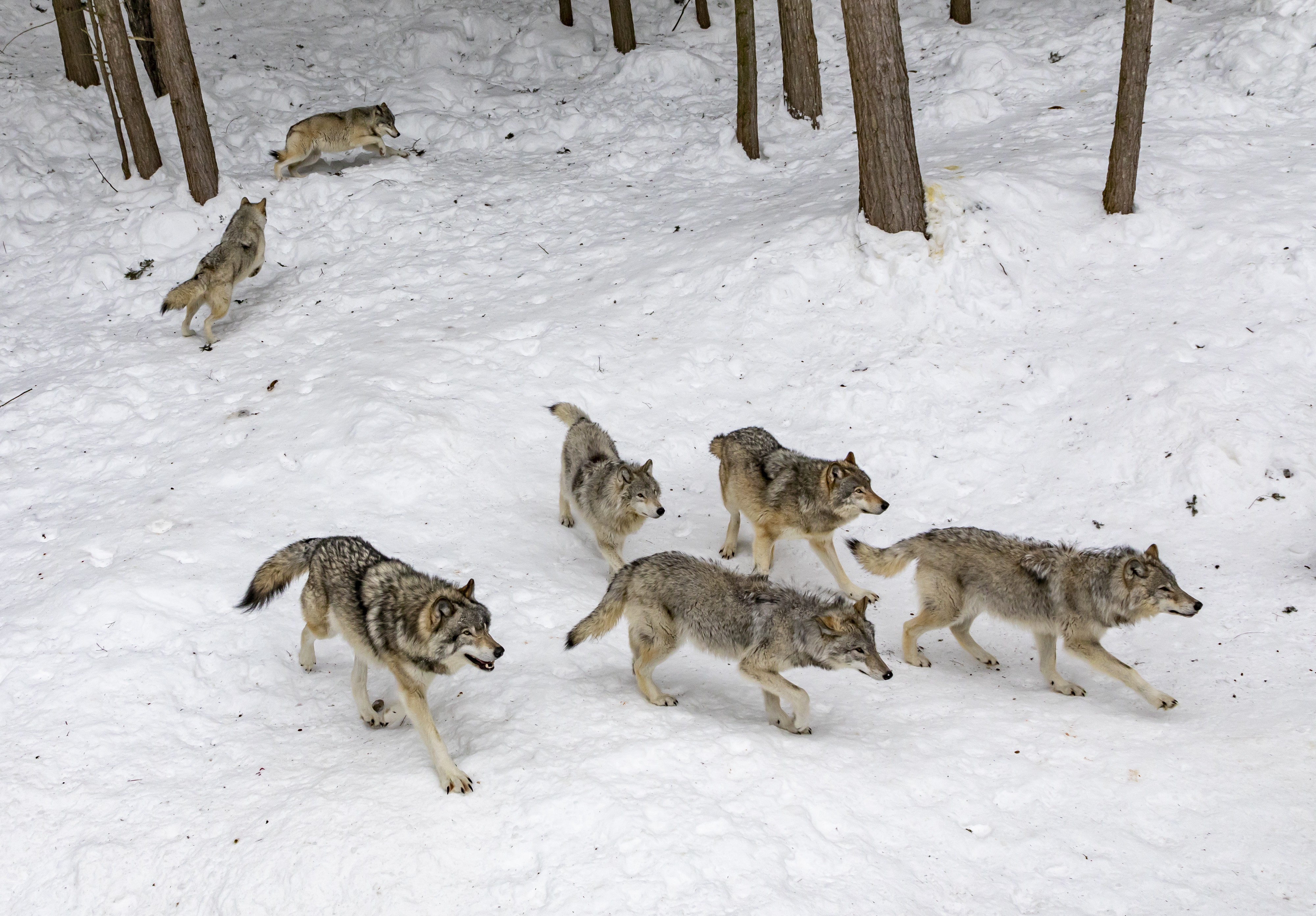 Photo by Mitchell Orr on Unsplash
Photo by Mitchell Orr on Unsplash
On September 13th, 2004, the National Geographic Channel aired the first episode of Dog Whisperer with Cesar Millan.
Featuring self-proclaimed and self-taught dog trainer, Cesar Millan, the show covered Millan?s attempts to correct the results of negative, often aggressive dog behaviors and improper training.
Prior to the show?s production, Millan had gained some rapport among celebrity clients for training their dogs. With an already circulated reputation, this new show propelled him into even further success.
Since then, Millan has featured in several other television series, written a handful of books, and published a successful website, all dedicated to his methods of dog training.
 Photo by Matt Nelson on Unsplash
Photo by Matt Nelson on Unsplash
By the time Millan?s first show had settled into several seasons, I had already missed the hype train. I was eight when the show first aired, and by the next year, completely consumed by Victoria Stilwell?s It?s Me or The Dog. Makes sense that I missed out.
When I did pick up Dog Whisperer, Millan was infamous, and I had been completely oblivious to the rippling impact he?d had on the world?s collective community of dog owners. As someone who had been an ardent fan of It?s Me or The Dog, I figured Millan?s show would be right up my alley.
I was very wrong.
Since its run, Millan?s show, its successors, and his methods, have all been featured at the center of heavy criticism. And all within good reason.
At face value, the show did not exactly feature the sort of personality that had come to be associated with the more famous show hosts of, for example, channels like Animal Planet. The sort that was well-researched, and at the very least, directed in such a way that animals and the education of the audience benefited from the programs these hosts featured in. Information was clearly not checked, and double checked, and then triple checked.
Worse even, was that Millan?s dialogue frequently indicated he lacked a fundamental understanding of dog behavior, and even dog genetics. In fact his show was frequently in direct contrast with actual research and humane methods of dog training.
It?s not that all of Millan?s thoughts and ideas were dangerous. But there?s one particular line of thinking he employed that produced the most amount of damage that, even up till today, is thought of as being correct by people who, frankly, don?t know better. That being said, in order to truly understand what was wrong with the Dog Whisperer?s approach, we need to start from the very tip-top.
Cesar Millan, Origins of the Dog Whisperer
 Photo by Marcus Cramer on Unsplash
Photo by Marcus Cramer on Unsplash
While still shocking to some, Cesar Millan is not an educated dog expert. At every point in every show he?s ever starred in, he?s completely lacked any formal education in animal behavior or psychology.
Rather, it?s because of connections Millan developed while living in Los Angeles that he eventually found himself at the center of celebrity attention as a purported and seemingly prodigious dog trainer.
Originally born in Mexico, as a child Millan had been praised for possessing what was, apparently, a natural affinity for interacting with dogs. His childhood reputation, some rudimentary experience with dogs in a clinical setting, and his personal belief in his connection with animals carried over with him from Mexico to Los Angeles where he eventually fostered celebrity connections that kick started the beginnings of his success as a dog trainer. From that point onward, his reputation expanded and eventually led to the production of Dog Whisperer.
Self-Taught?Expert?
 Photo by Jamie Street on Unsplash
Photo by Jamie Street on Unsplash
Is self-taught always a bad thing? No, not necessarily. If a trainer chooses to stay up-to-date with current science, and follow a modern take on dog behavior, said trainer will probably be relatively successful.
But there are no rules and regulations in place to guarantee self-proclaimed dog trainers abide by current research. There aren?t even regulations that stipulate what kind of education a dog trainer needs in order to be working with animals.
And that is actually a huge issue.
People who refuse to do research and keep up with modern studies probably should not be making absolute statements about something as delicate as the dog psyche.
And yet we have people like Cesar Millan, who shifted the entire scene of dog training by simply hosting a show.
Unfortunately, Millan?s initial success cannot really be attributed to a broad knowledge of current and tangible dog research. His methods were built on personal opinion and severely outdated information, and the language he implored in his show often did not align with the jargon utilized by researchers or educated behaviorists.
Throughout the course of his multiple series, Millan also never modified his techniques to conform with current knowledge, and continued to perpetuate out-of-date, ineffective methods of training.
Ultimately, it?s really no wonder he?s been at the center of controversy and criticism for as long as he has.
Cesar?s ?Way?
 Photo by Patrick Hendry on Unsplash
Photo by Patrick Hendry on Unsplash
At a glance, Cesar Millan?s opinion on dog needs seem harmless enough. According to Millan, in order for dogs to thrive, three key requirements must be met: the dog should be appropriately exercised, disciplined, and given affection, three notions that are dutifully repeated by Millan in every episode of Dog Whisperer that I can remember watching.
These three basic principles alone aren?t revolutionary or obscure concepts in dog training. They?re the elementary stepping stones that every potential and actual dog owner should be made aware of when purchasing or adopting their new furry family member and are actually very positive rules to live by.
But these three safe, tried and true concepts only scratch the surface level of Cesar Millan?s stance on dog training. Delving deeper into his personal theories uncovers Millan?s most offending, outdated, and even dangerous belief on dog psychology and behavior.
 Photo by Anoir Chafik on Unsplash
Photo by Anoir Chafik on Unsplash
In each and every episode of the Dog Whisperer, Millan placed an emphasis on hierarchical pack dynamic, pack leadership, and canine dominance. His whole approach was anchored to the idea that dogs have some innate need to fulfill a natural, primal role in life related to the way wolves behave in the wilderness. According to Millan, this means that a dog?s life with its family should mimic stringently the way in which it would supposedly function in a pack.
Though he phrases it differently, what Millan ultimately is, is a staunch believer in what is known as ?alpha theory,? an outdated and harmful theory that was originally derived from and applied to the dominance ranking and hierarchical behavior observed in that of captive wolves.
Understanding Alpha Theory and Why It Sucks
 Photo by Philipp Pilz on Unsplash
Photo by Philipp Pilz on Unsplash
The term alpha was first applied to wolves by biologist Rudolph Schenkel, who coined the term based on his observations of the behavior of captive wolves. Schenkel?s observations had concluded that wolves lead vicious lives, implementing violence as a means of sorting out dominance, and by that extension, access to resources.
Alpha theory was eventually popularized by researcher L. David Mech in his book The Wolf, and has gone on to become cemented into the minds of millions of wolf and dog lovers worldwide. The saddest part of this almost ubiquitous adoption of alpha theory was that L. David Mech would, himself, later go on to refute the terms validity, acknowledging that the origins of the theory had been based on an analysis of wolf behavior in an artificial environment.
Rudolph Schenkel had not observed the natural formation of wolf packs, and therefore not really documented the natural behavior of wolves. The initial specimens that had given rise to his application of the term had been unrelated, fully grown wolves, forced together in captivity under abnormal circumstances. These circumstances were at the root of the violent behavior Schenkel had recorded.
Numerous studies post the publishing of Mech?s The Wolf continued to disprove Schenkel?s theory. Eventually, it was determined that wolves formed family units in a manner similar to humans. What had originally been perceived to be the ?alpha pair,? were, in actuality, just a pack?s parents, and a pack, rather than being composed of several unrelated adults, was formulated of the breeding pair and their related offspring, with far less violence occurring between individuals of the same family.
 Photo by Eva Blue on Unsplash
Photo by Eva Blue on Unsplash
Time and time again, alpha theory has been disproved in the face of natural, real-world evidence, and time and time again, uninformed ?trainers,? and owners have latched onto these dangerously outdated concepts and attached them to dogs when those concepts never even applied to wolves to begin with.
Cesar Millan is irrevocably one of those people. Throughout the course of his multiple series, Millan extrapolated the most outdated perceptions of canine behavior and stapled it at the very top of his dog training itinerary.
The failure of this theory is critical to understanding why, out of any of his opinions, this belief happened to be the most dangerous one to influence Millan?s methods.
A Physical ?Assertion,? of Dominance
 Photo by David Taffet on Unsplash
Photo by David Taffet on Unsplash
In accordance with alpha theory, unnecessary and uncomfortable physical contact plays a central role in Millan?s methodologies, and his execution of said methods on his various shows have led to some of the most shocking and heart wrenching scenes knowingly filmed and presented in a positive light.
Throughout his shows, Millan did not seem to believe in a dog?s primary ability to feel stressed, anxious, or fearful, feelings that most good trainers acknowledge a dog can be affected by. His analysis of an animal was always primarily based upon what he believed was the dog?s intent to challenge its status in the pack, or the dog?s inability to grasp its role in the pack. Constantly, issues always seemed to lead back to ?the pack.?
His solution to this one-dimensional interpretation of dog behavior was to implement an unpleasant use of body contact on the ?challenging,? dog. Millan implied this contact would simulate the manner in which canines interacted with each other to sort out and maintain their hierarchical structure. These included among them jabs to the sensitive abdomen and throat, physical restraint, and worst of all, choking.
His show was riddled with actions that, to any human being, trained or otherwise, could prove to be dangerous and potentially life-threatening to both dogs and humans.
In one episode, Millan chokes a husky until the animal flops on the ground gasping for breath. Throughout the ordeal, the animal transitions from aggression to what is clearly a fight for survival as it struggles to escape Cesar?s grip.
In multiple episodes, Millan backs obviously aggressive dogs into corners, an action that doesn?t constitute an assertion of dominance, but instead indicates a severe lack of judgement, and a willingness to encourage unknowing viewers into repeating the same empty, fruitless, and dangerous methods they?ve watched on TV.
In another popular instance clipped forever onto Youtube, Millan physically provokes a Labrador into displaying intensified aggression by jabbing it when it is already expressing signs of food aggression. By provoking the dog further, Millan inevitably leads to the animal?s failure.
Using physically hurtful contact also increases the potential for an aggressive reaction from a dog, which is, frankly, something that is observable between dogs. Ask any dog owner who?s dog has been attacked by another. One of the primary concerns of these owners is if their dogs will develop reactive aggression issues post-attack, a problem that is unfortunately common with attacked dogs, and an issue that has plagued many pet parents of aggressively attacked dogs.
Learned Helplessness
 Photo by Justin Veenema on Unsplash
Photo by Justin Veenema on Unsplash
Provocation was another common theme of Millan?s shows, and one that is spoken about freely in a behind-the-scenes recording of one of his shows. Provoking dogs into aggression ? basically setting them up for failure ? is a staple of his multiple series.
Instead of focusing on reinforcing positive behaviors, Millan elicited and inflamed negative behaviors. And while his hands on, punishment heavy approach occasionally worked, not all of his methods served to modify or guide dogs into behaving differently.
Rather, in some cases, they forced the dog into psychological unresponsiveness, a reaction Millan accepted as a successful conclusion to training. This psychological unresponsiveness is known as learned helplessness and has been observed in dogs previously, as early as the late 60?s.
Psychologist Martin Seligman conducted an experiment where dogs were shocked at random. The dogs were given no ability to perform a task which would alleviate the shock, and could not predict or determine when they would be shocked. This lack of control led the dogs to becoming unresponsive and expressing depressive characteristics when shocked. The dogs who were given no option that would alleviate their pain simply laid down and whimpered whenever they were electrocuted.
Forcing a dog into learned helplessness is cruel. No dominance has been asserted. Instead the dog has been psychologically, and sometimes physically, forced into essentially shutting down.
This is in part caused by something Millan constantly brought attention to without truly understanding. Many of his episodes centered around the fact that he believed humans were treating dogs like they would another human, perhaps a child. And while Millan is correct-dogs aren?t people-people aren?t dogs. With our poor, delayed timing, different anatomy, and completely separate body language, we have no business attempting to correct a dog the way another dog would.
 Photo by Charles on Unsplash
Photo by Charles on Unsplash
People are not dogs. Our random, haphazard corrections, and our still developing understanding of dog behavior, gives us no business to correct dogs in the way we think other dogs might. A dog that does not understand what it is being corrected for, and why it is being physically punished if it cannot make that correlation with what it is doing wrong, is a dog that will fall into learned helplessness.
So, with this treasure trove of material, why does the dog whisperer still have so much support? Why have we continuously allowed Millan to educate the public with outdated theories and methodologies?
Because Cesar is Actually a Good Person!
 Photo by Jamie Street on Unsplash
Photo by Jamie Street on Unsplash
I see this one a lot. Cesar Millan actually does a lot of other, good things for dogs, therefore this negates the bad things he?s done to animals.
And yes. Cesar Millan has, actually, done good things for dogs.
But no! That doesn?t negate the harm of the techniques he?s proliferated throughout the dog loving community.
I?m always perplexed by how hesitant people are to criticize Millan for implementing methods that are visually recorded and very obviously stressful for the dog in question. By refusing to call it as it is, this hesitation has allowed thousands of amateur dog owners to believe they are correct in performing actions that are ultimately harming their dog, and could, potentially, have lasting, dangerous consequences on their bond with their pet.
I have watched Cesar. It is very obvious he loves his animals. But just because you love something, doesn?t exactly mean you know how to treat it right, or with the respect it deserves.
Well-intentioned or not, it doesn?t change the fact that Millan celebrated, through his training, an extremely outdated approach to dog behavior and psychology that has not necessarily benefited dogs in the long run.
What is the solution to aggressive dogs?
 Photo by Annie Spratt on Unsplash
Photo by Annie Spratt on Unsplash
Cesar Millan?s primary mission was to rehabilitate aggressive dogs. Cesar Millan?s driving theory, and his approach to dog rehabilitation, however, is outdated, unreliable, dangerous, and psychologically harmful.
Positive reinforcement should be the primary answer to mild cases of aggression, and common issues with dogs that don?t actually indicate that the dog in question is neurotically or abnormally aggressive, like food aggression and resource guarding.
In fact, positive reinforcement has increasingly become the solution to ethically training both domestic and captive exotic animals. It is possibly the safest method for both the animal and human involved; it creates a level of separation that reduces the potential for aggressive physical contact between trainers/owners and the animal being trained. No jabbing necessary.
Dutiful supervision and experienced owners are also a necessity if one is to successfully maintain the training and behavior of a dog that is above just mildly aggressive behavior.
For especially neurotic cases of aggression, anecdotally, most of the rescuers and shelters I?ve spoken with have advocated for ethical euthanasia. We can?t verbally communicate with dogs, and an extremely neurotic and dangerous dog has no way of letting us know it?s been ?cured.? An animal that is that high risk will always pose a danger to handlers, owners, other dogs, and the general public. As unfortunate as it is, sometimes ethical euthanasia is the answer to an overall, extremely dangerous situation.
Moving Towards a Healthier Dog Training Scene
 Photo by Nomi Macavei-Katcz on Unsplash
Photo by Nomi Macavei-Katcz on Unsplash
Humane dog training does not require physical force. It doesn?t require choking or jabbing.
Cesar Millan had, and even continues to have, many ideas and theories that followed the norm for successful and safe dog training. A cursory glance at his Youtube channel seems to indicate he?s tried to phase out the more physical methods he?s previously used in his show.
Unfortunately, that does not change the fact that one of his most popular methods of training is based on an outdated theory that does more harm than good, and very often is executed through the use of unnecessary physical force.
Cesar?s popularity has illuminated many of the issues we see with dog training today.
First and foremost among them include the facts that there are no regulations determining who can and cannot become a dog trainer, and no certifications needed to prove you have the training and education necessary to properly and humanely interact with a dog. These issues have consistently allowed people who are not even remotely qualified to interact with animals to get out of bed and just decide to call themselves dog trainers.
Secondly, that casual negligence is still very much accepted among dog owners because there are no stipulations that determine who can and can?t own a dog. While I?m personally of the belief that everyone who wants to, and is properly capable of, owning a dog should be able to, people must be educated on the proper way to treat and care for their dog. Places like the US should be taking example from countries like Switzerland, where the government recommends courses for first-time owners, a current suggestion that was once mandatory for Swiss people.
I think all of this leads to one of the most crucial questions we need to ask ourselves: Why do we continue to allow faulty, sometimes dangerous, training methods to continue to pervade dog training, even in the face of methods and research that condemn these actions?
Maybe it has to do with the continued perception of dogs as property, as opposed to living beings. Maybe it has to do with the unsaid power dynamic between a person and an innocent animal.
Whatever the case, Cesar Millan?s continued popularity has taught us one very important thing: things must change in dog training, if not for the safety of people, at least for the benefit of what we claim are our beloved furry friends.
 Photo by Jonathan Daniels on Unsplash
Photo by Jonathan Daniels on Unsplash
References
Video References
https://www.youtube.com/watch?v=9ihXq_WwiWM
https://www.youtube.com/watch?v=RHeqcWB6LnE
Interesting Reads
https://penntoday.upenn.edu/news/if-youre-aggressive-your-dog-will-be-too-says-veterinary-study-university-pennsylvania
https://www.sciencedirect.com/science/article/pii/S0168159119300127
https://www.swissinfo.ch/eng/keeping-pets/43796110


